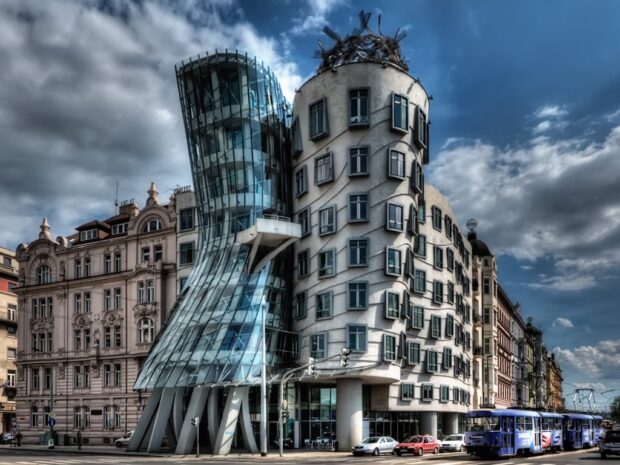Institutionalizing architecture, land development criticism

Design consequences impact health, mobility, safety, and productivity. (HTTPS://THEARCHITECTSDIARY.COM)
Criticisms in any work discipline or aspect of human life are lodged as responses to experiences with anything that shakes the status quo.
In the fields of architecture, urban design and planning, statements circulate to provide feedback on how buildings and land development interventions have either positively or adversely affected people’s physiological state and daily activities. Others would share how new developments have affected their emotions and mental well-being.
Impact to the ecosystem
Any intervention in the natural state of the environment has public consequences. Anything that is added to or subtracted from the present state of the built environment translates to varying degrees of effects to the whole ecosystem of living and non-living matter.
Design consequences impact health, mobility, safety, and productivity. Some projects offend cultural sensibilities and others cause conflict and disharmony in communities.
Given the range of impacts of architecture and land development, the avenues for providing positive and negative feedback should be kept open. How these avenues are tapped, however, should be governed by rules that are based on moral grounds, respect for institutions and principles of co-stewardship.
With the ease with which one can share thoughts through social media platforms, a critic should be cognizant of the nature and extent of influence of publicly shared statements on the built environment.
Criticism as a formal process
Architecture and other creative fields may be subjected to rational critiquing systems that often allow for objectivity due to the many value-laden filters that come into play. There are aesthetic principles that govern how most people would label a building as beautiful or ugly but there are also socially constructed standards that affect perceptions.
Architecture criticism is intrinsically embedded in the design process as architects begin with design objectives that guide programming and spatial translation. The iterative nature of design refers to benchmarks, visions and expected outcomes.
There are formal venues and systems for design critiquing. Recommendations preceded by research may reach a wide audience through publications, conferences, and different types of public forum. Architectural theses and dissertations challenge the norms and propose alternatives through the pursuit of new knowledge. Varying levels of people’s engagement come in the form of end-user consultation, stakeholders’ workshop, and public hearings.
Architecture design assessment is done through established systems for post-occupancy evaluation, project terminal reports, environmental impact assessment, among others. In other countries, the important roles of community councils and professional councils in the shaping of the physical environment are built into the building codes and systems for securing building and development permits.
The business side of critiquing involves adding value to companies that engage in product development based on market studies. Knowing buyers’ experiences with purchased properties and understanding how development projects are perceived by the public will inform the delivery of new and better products.
Value of critiquing
Positive feedback affirms good designs and properly implemented processes. Negative comments should feed into the formulation of corrective measures in the immediate term and into the creation of more responsive designs in the long term.
Either way, people can expect better spaces and life quality because of feedback figuring in the future design products. Informing decisions on new projects based on years of documented experience redound to the leveling up of standards.
More importantly, the objective of improving the ways we address health, safety and well-being concerns underlies the importance of feedback mechanisms. Disseminating feedback can deter the proliferation of purely market-led development initiatives that harm people and the environment.
Boundaries for critiquing
Notwithstanding the importance of design criticisms, boundaries exist to rationalize the process and to ensure that other standards of social order are not breached. Rules on professional ethics are formalized to regulate the manner in which criticisms involving colleagues in the same professional circle are brought to the fore. Cultural norms also limit the extent to which we criticize.

Positive feedback affirms good designs and properly imple-mented processes. (HTTPS://WWW.JAARONASSOCIATES.COM)
The notion of “saving one’s face” and the interpretation of “pakikisama” may prevent dissatisfied people from rocking the boat. The blurred boundaries between the concepts of public and private also make people reconsider sharing criticisms.
Then there are the legal frameworks that require critics to draw the line between constructive criticisms and grounds for libel due to statements that affect reputations.
Optimizing benefits
Engaging stakeholders and constituents in visualizing the future of the built environment will minimize divergences in perceptions. Collectively giving form to people’s hopes and aspirations will help manage expectations on how our neighborhoods and cities would look like.
Architects, urban designers, and planners may refer to vernacular spaces as expressions of responsive designs and adapt these to the present times. Critically embracing foreign concepts and technology can also serve to narrow the gap between design objectives and design outcomes.
Architecture and development projects can catapult places from oblivion to vibrance and robustness.

Given the range of impacts of architecture and land develop- ment, the avenues for providing positive and negative feed- back should be kept open. (CHRISTINE KLOCKE)
New construction, infrastructure and land development can stimulate growth or destroy communities. Modernizing places through the built form can enhance national pride or may result in the erosion of culture and identity. In a globally shared space where everyone has something to say, we need to be able to sieve and process information towards innovation and scaling up of our experiences with our designed spaces.
Given the different capacities to express and be heard, the ability to hear beyond the noise will enable the extraction of valuable design criticisms. Institutionalizing the critiquing process lies mainly in the domain of public governance.
The author is a Professor at the University of the Philippines College of Architecture, an architect and urban planner

